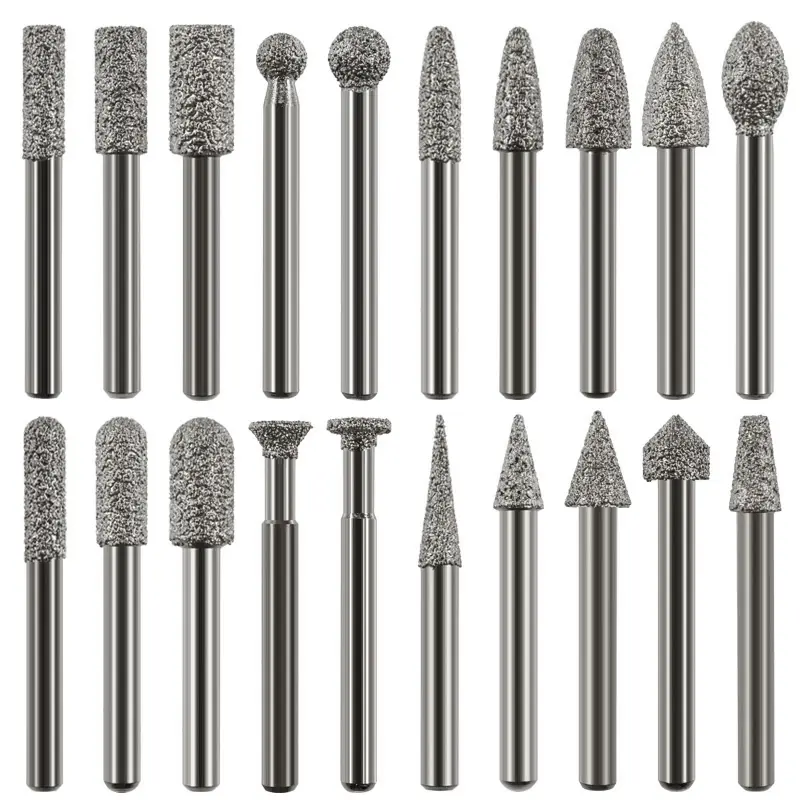Global Leading Diamond Tool Manufacturer.
Difference in Pricing Between Diamond Tools
Diamond tools are indispensable in various industries, prized for their ability to cut, grind, and drill through the hardest materials with precision and efficiency. However, the market for these tools reveals a wide range of pricing, often leaving buyers to wonder what drives these differences. Understanding the factors influencing the cost of diamond tools is crucial for making informed purchasing decisions.
Understanding Diamond Tools: An Overview
Diamond tools are specialized implements that incorporate diamond segments or dust, renowned for their hardness and cutting prowess. Commonly used in industries such as construction, manufacturing, and mining, these tools are essential for tasks ranging from cutting concrete to polishing surfaces. The pricing of diamond tools plays a pivotal role in their selection, as it often reflects their quality, performance, and longevity.

Material Quality
The quality of diamonds used in the tool significantly affects pricing. High-grade diamonds offer superior cutting performance and durability, justifying a higher price point. Conversely, tools made with lower-quality diamonds may be more affordable but often compromise on durability and effectiveness.
Manufacturing Technology
The technology employed in manufacturing diamond tools also impacts their cost. Advanced manufacturing processes that enhance tool performance and precision can increase production costs, resulting in higher prices. However, these tools often provide better results and longer life spans, offering better value over time.
Tool Size and Design
The size and design of a diamond tool can influence its price. Larger tools or those with complex designs may require more materials and intricate manufacturing processes, leading to higher costs. Buyers should consider their specific needs to ensure they select a tool that offers the best balance between size, design, and price.
Factors Influencing the Cost of Diamond Tools
Material Quality
High-quality diamonds ensure superior cutting performance and durability, justifying a higher price point. Lower-grade diamonds, while more affordable, may compromise on performance and longevity.
Manufacturing Technology
Advanced manufacturing processes in diamond tools can enhance performance and precision. These tools often come with a higher price but are designed to last longer and perform better.
Tool Size and Design
Larger tools or those with complex designs require more materials and intricate manufacturing processes, leading to higher costs. Buyers should consider their specific needs to get the best balance.
Comparative Analysis: High-End vs. Economy Diamond Tools
High-end diamond tools are designed for heavy-duty applications, offering superior performance and durability. These tools, although more expensive, reduce downtime and replacement costs. Economy options are suitable for less demanding tasks and can be more budget-friendly but may compromise on performance.
Market Trends Affecting Diamond Tool Pricing
Global Supply Chain Dynamics
Fluctuations in the global supply chain, including raw material availability and transportation costs, can affect diamond tool pricing. Buyers should stay informed about these trends to anticipate potential price changes.
Technological Advancements
Technological innovations in tool manufacturing can enhance performance and introduce cost efficiencies. These advancements often lead to higher manufacturing costs, which can be reflected in the final price.
Consumer Perception and Its Effect on Pricing
Brand reputation plays a significant role in diamond tool pricing. Established brands with a strong reputation for quality may command higher prices, justified by consumer trust and positive reviews. However, negative feedback can also impact pricing if it reflects on the brands reliability and performance.
Navigating the Diamond Tool Market: Tips for Buyers
Research Extensively
Compare different brands and models to understand their features and benefits. For example, a detailed comparison of high-end and economy tools can help buyers make informed decisions based on their specific needs.
Negotiate Prices
Dont hesitate to discuss pricing with suppliers, especially for bulk purchases. Negotiating can help buyers secure better deals and reduce costs.
Verify Quality
Ensure the tool meets industry standards and comes with a warranty for added assurance. A warranty can provide peace of mind and protect buyers from unexpected costs due to tool failure.
Making Informed Decisions on Diamond Tool Purchases
Understanding the factors influencing diamond tool pricing is essential for making informed purchasing decisions. By considering material quality, manufacturing technology, and market trends, buyers can balance cost and performance effectively. Ultimately, investing in the right diamond tool can lead to enhanced productivity and long-term savings, underscoring the importance of thorough evaluation and strategic selection.
To sum it up, buyers should carefully evaluate the specific needs of their applications and consider factors like material quality, manufacturing technology, and brand reputation to make the best purchasing decision. This approach ensures they get the most out of their investment in diamond tools, optimizing performance and reducing costs in the long run.

